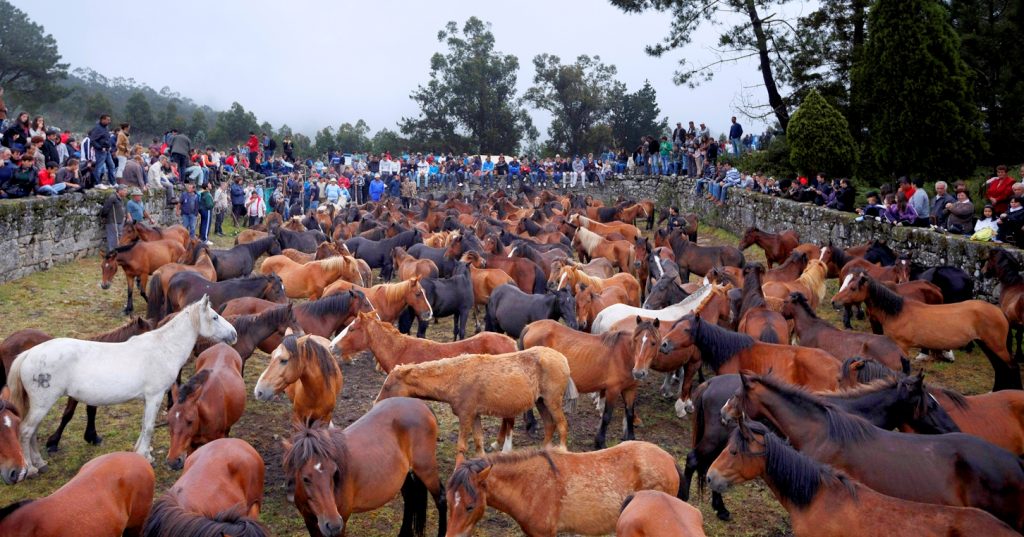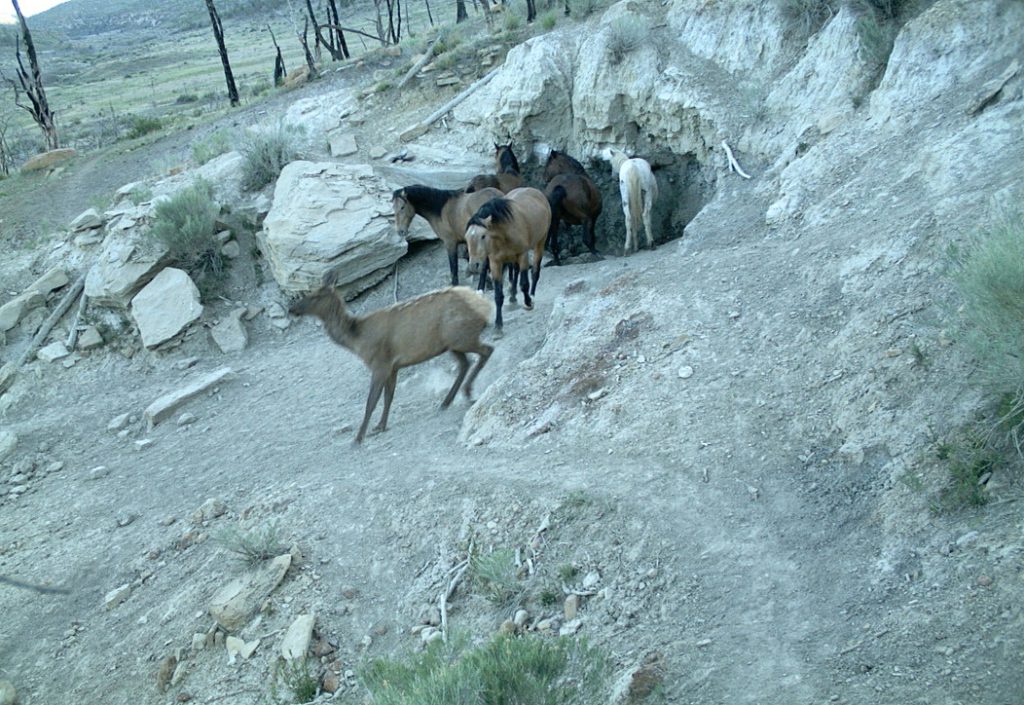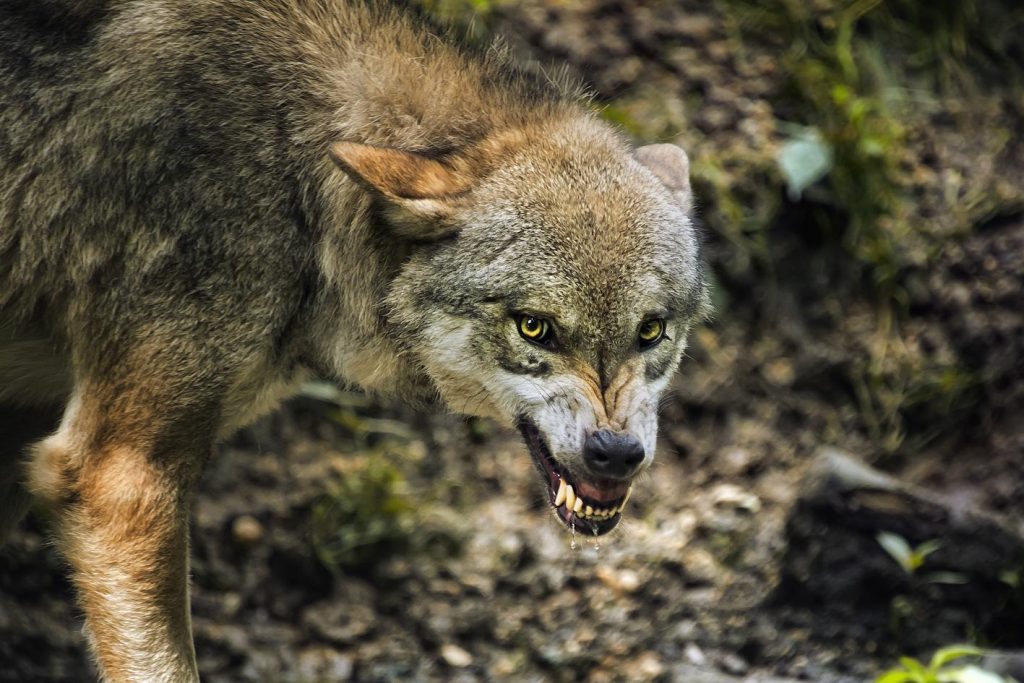Today, the agency is overburdened by the sheer number of wild horses and burros. In addition to the 67,000 horses roaming free, 45,000 horses are kept in BLM holding facilities across the country. This excess of horses – whose population is estimated to grow up to 20 percent each year – costs the agency more than $80 million to manage each year, two-thirds of its entire budget.
Wrangling the Wild Horse Problem

In September, an advisory board made a proposal to the Bureau of Land Management (BLM) that outraged animal rights activists: kill up to 45,000 unadopted wild horses. Some groups praised the National Wild Horse and Burro Advisory Board’s euthanasia proposal as a necessary step to manage rapidly expanding wild horse populations and their destruction of rangelands. But it was harshly criticized by animal rights activists, including the Humane Society, who said in a statement: “The decision of the BLM advisory board to recommend the destruction of the 45,000 wild horses currently in holding facilities is a complete abdication of responsibility for their care.” Ultimately, the BLM said it does not plan to kill any wild horses, but this proposal raised a pressing question: How should we manage our nation’s wild horses and burros? It’s a complicated issue rooted in the many conflicting demands over our rangeland resources.
Wild horses and burros descended from domestic stock that were released or escaped onto the open range as the West was settled. In 1971, Congress passed the Wild and Free-Roaming Horses and Burros Act, which protected the animals as “living symbols of the historic and pioneer spirit of the West.” The BLM was suddenly required to leave room for feral horses on public rangelands while still keeping the land open for cattle-grazing.
Out on the open range, wild horse and burro populations boomed and quickly ate away at rangelands, to the point where animals died of starvation. Ranchers who paid to lease the same rangeland for their cattle struggled as there was little forage left for the livestock. In response, the BLM cut back on the number of livestock that could be grazed and removed excess wild horses and burros to holding facilities. The excess animals were then put up for adoption for a minimum fee of $125.
But overgrazing in herd management areas continues to be an issue. For example, the BLM calculated that there was enough grazing in the Antelope Valley Complex herd management area for up to 500 horses, but today the horse population is seven times the appropriate management level, and forage is scarce. Efforts to limit populations through injecting the feral animals with a birth control vaccine have been successful, but it is often difficult to administer the vaccine in the remote places where the wild horses roam.
Today, the agency is overburdened by the sheer number of wild horses and burros. In addition to the 67,000 horses roaming free, 45,000 horses are kept in BLM holding facilities across the country. This excess of horses – whose population is estimated to grow up to 20 percent each year – costs the agency more than $80 million to manage each year, two-thirds of its entire budget.
“Passionate people on all sides of the issue have created a gridlock that they’ve stifled the BLM’s ability to keep wild horse populations at a controlled level,” commented Ben Masters, a member of the National Wild Horse and Burro Advisory Board. “In a way, wild horses are being loved to death because people focus on their beauty, but not the health of the rangeland they depend on.” Masters further stated that simply giving out more land for wild horses is irresponsible because “even if we tripled the amount of acreage available to wild horses, they’d fill it up in 10 years, and we’d have the exact same problem.” He instead advocates for finding a sustainable balance of limited cattle and wild horse populations on the rangeland.
Recently, PERC scholars Randy Rucker and Tim Fitzgerald researched approaches other than euthanasia to control the number of wild horses held by the BLM. They conclude that, from an economic perspective, the management problems encountered by the BLM are based in the fact that not enough wild horses are being adopted.
One approach to solving the problem is to allow wild horse advocates to purchase grazing permits from livestock producers who currently hold them. This would allow wild horses to effectively replace some of the livestock on BLM lands. However, because horses reproduce so quickly, removing cattle in favor of horses would not solve the long-term problem of rangeland destruction through overgrazing.
Another possibility is to increase the demand for adopting wild horses by training the horses. Rucker and Fitzgerald find that people are far more willing to adopt a horse that has some training than a completely wild horse—and they will pay more to do so. The increase in price would offset the price of training, and quickly finding a horse a new home saves the BLM the money that would otherwise be spent on holding the horse in an agency facility.
Alternatively, the BLM could decrease the $125 adoption fee, even allowing horses to be adopted for free if no other bids are received. Rucker and Fitzgerald found that even untrained horses were more likely to be adopted if the fee were lowered. While the BLM would still earn some revenue from the adoption fees, they would also forgo the costs of long-term holding.
The situation facing the management of wild horses and burros is complicated. Horse and burro populations grow rapidly if left unchecked, there is not enough rangeland to feed them, and storing excess horses and burros in BLM holding pens is expensive. In order to preserve rangeland and ensure wild horses are protected, some form of population management – be it the Board proposed method of euthanasia or measures that lead to more horses and burros being adopted – is necessary.
Hannah Downey
Property & Environment Research Center

*Free Range Report*




The BLM should consider introducing wolves to cull the wild horses in areas where they are so thick that cattle ranching is no longer viable. We keep hearing about how wolves supposedly “balance” nature but it’s only attempted in places where nature is already balanced by well-managed cattle herd size control and well-planned hunting permits are issued. Why not try it instead where nature is conspicuously out of balance? This would alleviate numerous issues. First, the wolf advocates have something to feed their wolves without harming ranchers, because the ranchers were already driven off the rangelands in that area by feral horse forage destruction. Second, it alleviates the problem of our tax dollars being squandered without limit to support even more herd expansion. Third, it protects the environment from overgrazing. Fourth, it’s a torturous way to die–being eaten alive or partially eaten and left to bleed out slowly— but the animal suffers the torture over a period of just days instead of several months, which is what starvation does. Fifth, it puts biomass on the ground which will replenish the depleted topsoil. Right now, the government insists on introducing wolves exclusively in prime cattle country–at great cost to individual families and rural communities– while ignoring the feral prey base where a lot fewer people would be harmed.
Another think the BLM can do is to translocate the feral horses into the National Parks where wolves are already present and cattle are already banished. There’s a lot of wasted forage there, and if horses are meant to be part of the natural ecosystem they should be in perfect balance there.
A good article on some respects but wrong in some. We were in a meeting the other day that an elected official said that the truth be known there are more likely 100,000 feral horses on the range. (quotes of numbers are usually 2012- 2014 numbers which could have doubled) Ranchers have already reduced there numbers by 50 percent. (as mandated by the BLM) In some areas there are 10 times the number of horses then is the AML, that the law allows. None of the suggested ideas will get the numbers down quickly enough to help the horse’s that are so at risk of starvation.
The biggest problem with the article is the ranchers own the allotments they do not lease the BLM rangeland. No they don’t own the land but they do own the grass. (the money ranchers pay to the BLM goes like this 25% to the COUNTY, 25% to the BLM for administrative costs and 50% to a fund that is used to range improvements for that allotment) Feral horse are not eaten in the U.S. but other countries would love to have that source of protein. It’s a sad situation that many Americans would rather look at and promote feral horses rather than have a great food source raised on the western rangeland. I guess when the cattle are gone then we will be forced to eat horse meat!